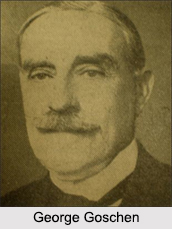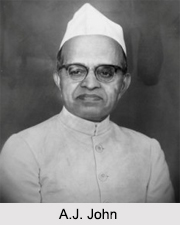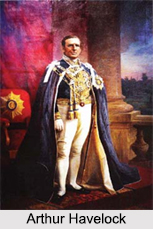 Madras Presidency was an administrative subdivision of British India. The administration of this Presidency was looked after by several people holding varying positions. One such position was that of a Governor. Some of the Governors of Madras Presidency are given below.
Madras Presidency was an administrative subdivision of British India. The administration of this Presidency was looked after by several people holding varying positions. One such position was that of a Governor. Some of the Governors of Madras Presidency are given below.
William Rose Robinson
William Rose Robinson was a part of the Indian Civil Service during the British Raj. In 1865, he became the Inspector General of Police of the Madras Presidency. He was the revenue member of the executive council of the Governor of Madras from 1870 to 1873 and an additional member in the executive council of the Viceroy of India from 1873 to 1878. He served as the governor of Madras from 28th April 1875 to 23rd November 1875.
Sir Gabriel Stokes
 Sir Gabriel Stokes is identified as an Indian civil servant and British colonial administrator. He hailed from Ireland and served Madras as its governor from 15th of February, 1906 to 28th of March, 1906.
Sir Gabriel Stokes is identified as an Indian civil servant and British colonial administrator. He hailed from Ireland and served Madras as its governor from 15th of February, 1906 to 28th of March, 1906.
George Goschen, 2nd Viscount Goschen
George Joachim Goschen was a British politician who acted as the Governor of Madras from 1924 to 1929. In 1924, the Madras Presidency Radio Club started the first radio transmission service in Madras, during the tenure of Goschen. Goschen is credited with the conception of the Pykara Hydroelectric Project across the Moyar River.
James Thompson
James Thompson was a British civil servant and administrator. He served as the Assistant Collector in the Madras Presidency from 1872 to 1882. He was appointed to the Board of Revenue for the Madras Presidency. Thompson was nominated to the Madras Legislative Council in 1898. He acted as a member of the executive council of the Governor of Madras from 1901 to 1906. He served as the Governor of Madras from 30th April 1904 to 13th December 1904.
He served as the Assistant Collector in the Madras Presidency from 1872 to 1882. He was appointed to the Board of Revenue for the Madras Presidency. Thompson was nominated to the Madras Legislative Council in 1898. He acted as a member of the executive council of the Governor of Madras from 1901 to 1906. He served as the Governor of Madras from 30th April 1904 to 13th December 1904.
John Sinclair, 1st Baron Pentland
John Sinclair, 1st Baron Pentland is recognized as a Scottish Liberal Party politician, soldier, administrator and privy councilor. He acted as the Secretary of Scotland from 1905 to 1912 and the Governor of Madras from 1912 to 1919.
John Erskine or Lord Erskine
John Erskine or Lord Erskine was a British soldier, conservative party politician and administrator. He was appointed as the Governor of Madras Presidency on 22nd of May, 1934 and served Madras as a governor till 1940. Erskine is known to repeal the law imposing compulsory study of Hindi in the Madras Presidency on 21st of February, 1940.
Other Governors of Madras Presidency
Some of the other Governors of Madras Presidency are Alexander Wynch, A. J. John and Arthur Havelock.



















